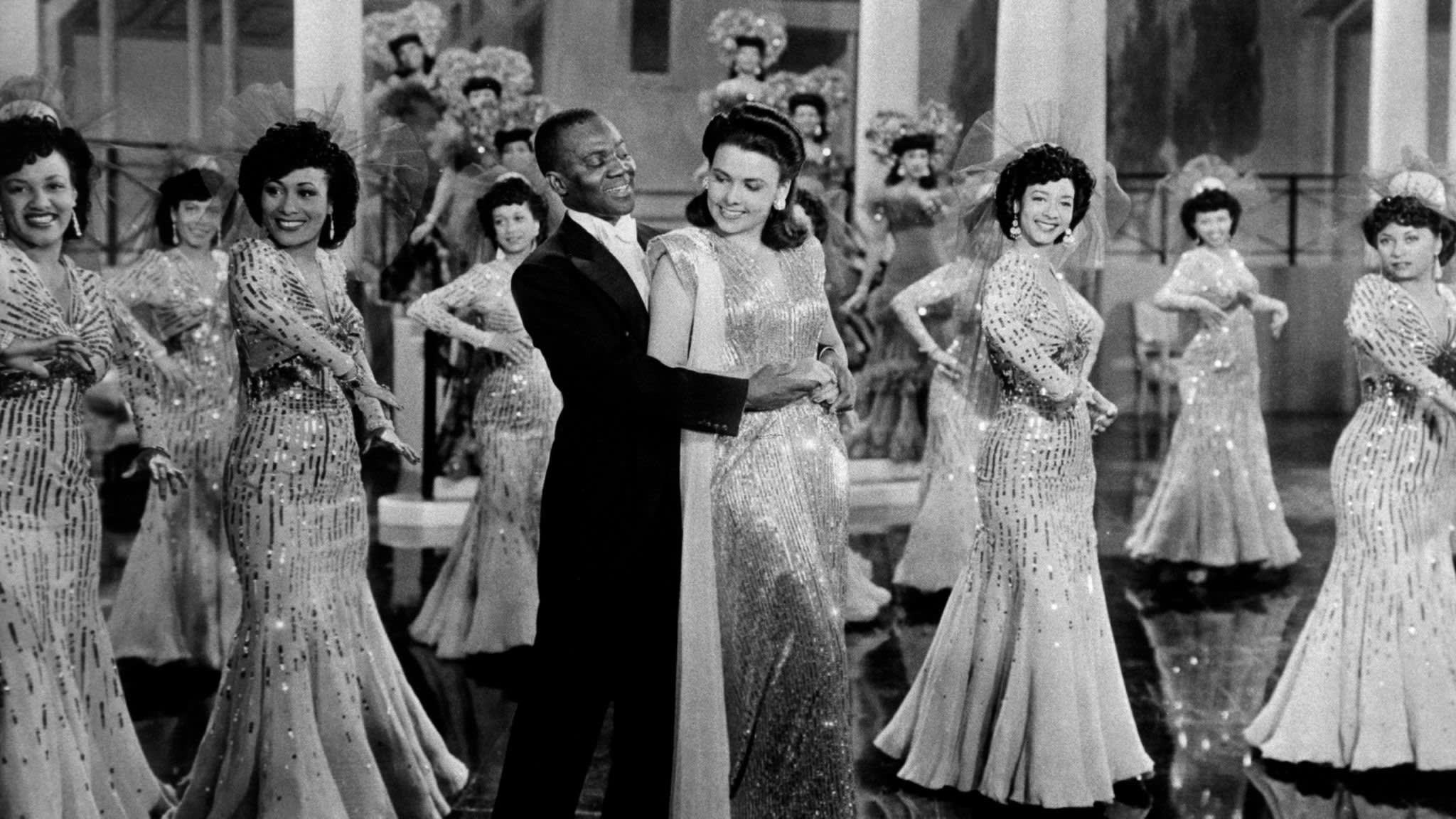
Should we watch old movies that have racist elements? I thought about that question before recommending Stormy Weather. I answer in the affirmative in this case because this 1943 movie is one of biggest explosions of African-American talent on screen in the first half of the 20th century.
The plot: Well, there isn’t much of one, really. The film is loosely structured around the legendary Bill “Bojangles” Robinson reminiscing about his life, but there’s no real driving narrative, developed characters, or acting of note (except for Dooley Wilson, who is hilarious as a slippery but ultimately good-hearted friend of Robinson). Although the movie is often called a musical, it’s more in the tradition of the music revues initially popular on stage that Hollywood began turning out as soon as talkies emerged in the late 1920s. Revues have a series of scenes in which a performer appears and does their thing (e.g., singing, dancing, jokes), and then with minimal set up or continuity, another performer appears and does theirs. Stormy Weather would have been just as entertaining if they had just had a host between numbers saying things like “Wasn’t Lena Horne fantastic ladies and gentlemen? Next up, put your hands together for Cab Calloway”. Feel free therefore to ignore all the interstitial material and focus your attention on the priceless performances by the stars.

A movie that contains Robinson, Wilson, Horne, Calloway, Ada Brown, Fats Waller, Katherine Dunham, Dizzy Gillespie, F.E. Miller, Coleman Hawkins, The Nicholas Brothers and more is going to provoke arguments over which is the best number. My choice is Waller and his band’s Ain’t Misbehavin’ but you could make a case for many others, include Dunham and Horne’s rendition of the title song. Not every musical star is made for film, but everyone here has extra dimensions to their performance that wouldn’t come out on their records, great as those are (e.g., I had no idea before this movie of Waller’s hilarious non-verbals).
Despite the wartime-imposed budget limits, the trappings around the performances also look fantastic. This includes some lavish Busby Berkeley-style numbers directed with panache by Andrew Stone and arresting camerawork by the revered cinematographer, Leon Shamroy.
All that said, there’s racist aspects of this movie that will put most viewers off some of the time and some viewers all of the time. It’s a white-produced film from the 1940s and minstrelry hangs in the air in several numbers, as do stereotyped characters. Lena Horne is gorgeous and talented, but the odds that a major Hollywood studio would have cast her as one of the leads if she weren’t relatively light skinned are surely close to zero. I can respect people who find the racist realities of the period so toxic that it ruins the movie for them today. Personally, I think of it from the performers’ point of view: They didn’t put that crap on screen, they were there to take advantage of a too rare chance to show off their enormous talent, and they succeeded. And if not for this film, we wouldn’t have visual records of some of these superstars, so I’m grateful for that as well. All of that tips me firmly in favor of this film being watched and appreciated today, but to each their own.
There’s no better way to close this review that by embedding what Fred Astaire said was the best dance number ever filmed: Jumpin’ Jive.
